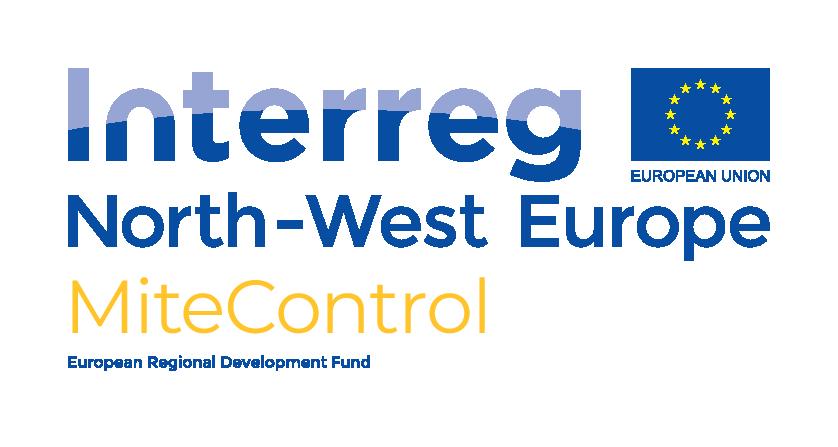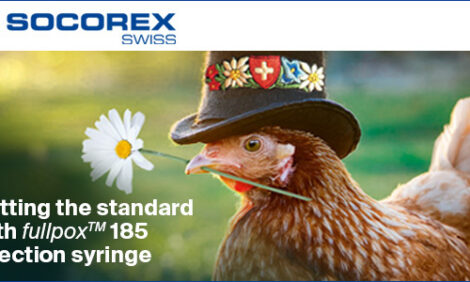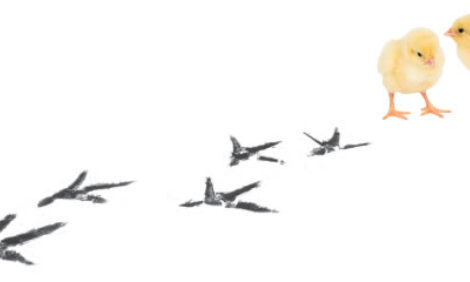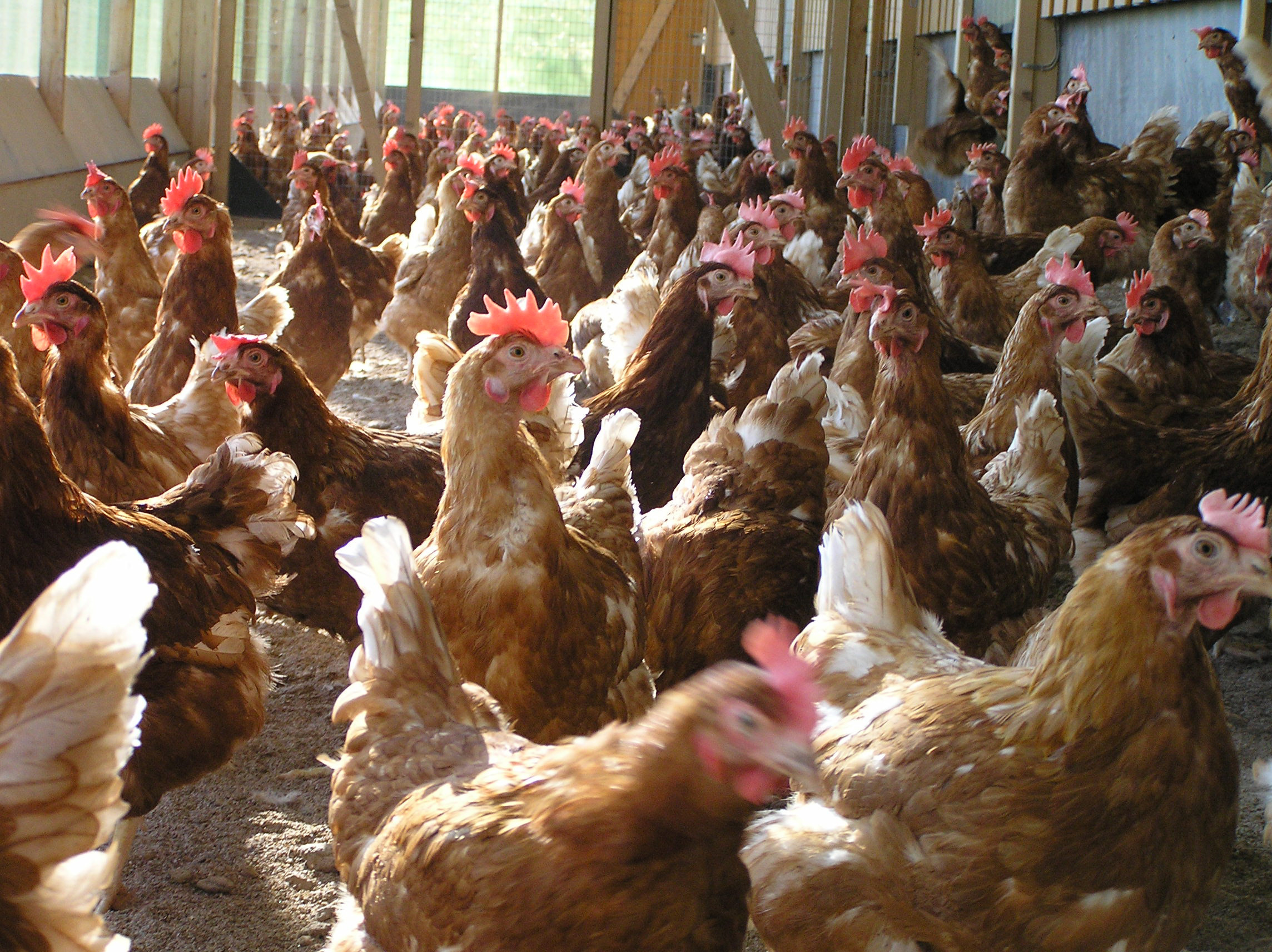



Developing a camera-based early-warning system for detecting red mite infestations
The prevalence of poultry red mite (PRM) across farms in Europe has been increasing and is expected to continue to increase.Part of Series:
Next Article in Series >
The removal of several acaricide products from European markets, increasing levels of resistance to acaricides and the shift from conventional to enriched cage systems are important contributing factors for the proliferation of red mite across Europe.
In laying hens, infestations of PRM can cause increased levels of restlessness, reduced sleep, stress, increased feed and water intake, anaemia and even increased mortality. Additionally, PRM are vectors of several zoonotic diseases such as salmonella and avian influenza. Economic consequences include reduced egg production and egg quality (thinner shells, lower weight and blood spots on the shells), while the total cost of red mite has been estimated to be up to €1 per hen per year (including direct costs for mite treatment and productivity losses).
The problem with current red mite monitoring methods
Currently very few farmers formally monitor their red mite populations. Most farmers notice infestations when they find clumps of mites on the house equipment, blood spots on the egg shells or when workers are bitten by mites. However, when these signs are evident, the infestation is already large and widespread and is likely to be negatively impacting bird health and production. There are various manual monitoring systems available, such as corrugated cardboard traps, but these are often time-consuming to set up and monitor and are therefore rarely used. Monitoring red mite populations is crucial, however, to effective red mite control. Being able to quantify red mite levels in a poultry house enables early detection and subsequent treatment of an infestation before significant negative effects are experienced. Treatment costs can be reduced, as unnecessary use can be avoided and treatments can be restricted to just the infected area (if identified) rather than the whole house.
Automatic PRM monitoring system
The MiteControl project aims to develop an innovative automatic PRM monitoring system with an early-warning alert for farmers. A prototype of an automated monitoring and decision-support system will be developed, tested and validated to support farmers with an early-warning system to control PRM infestations.
The monitoring system will be animal-based, using cameras to detect changes in bird behaviour which indicate the start of an infestation. It is well known from scientific research and practical experience that PRM infestations in hen houses change the behaviour of the birds. During the early stages of an infestation hens become more restless and show higher levels of preening and head scratching due to discomfort as the mites begin to feed. Under heavy infestations hens become more lethargic due to the development of anaemia. The automated monitoring system aims to take advantage of these behavioural changes, in particular frequencies of hen movement (frequency of sitting, standing, jumping and walking) to assess red mite infestation levels in the poultry house.
The development of this novel monitoring system is being led by KU Leuven university in Belgium. Initial tests have confirmed that the altered night-time behaviour of hens suffering from PRM can be measured by sensors. Through cooperation with other research institutes as part of the MiteControl project, KU Lueven is aiming to build upon this to develop and validate bio-response algorithms which use hen activity at night to predict red mite levels.
Recent experiments used both night-vision (2D) and depth (3D) cameras to detect hen activity during the night in small groups of hens kept in enriched cages. Images from the depth camera (Figure 1) were used to calculate activity indices (ie the amount of hen activity change). The next step is to understand how the activity indices change as a function of growing PRM populations. Once this is understood, algorithms can be developed which automatically monitor activity indices to predict red mite population numbers.
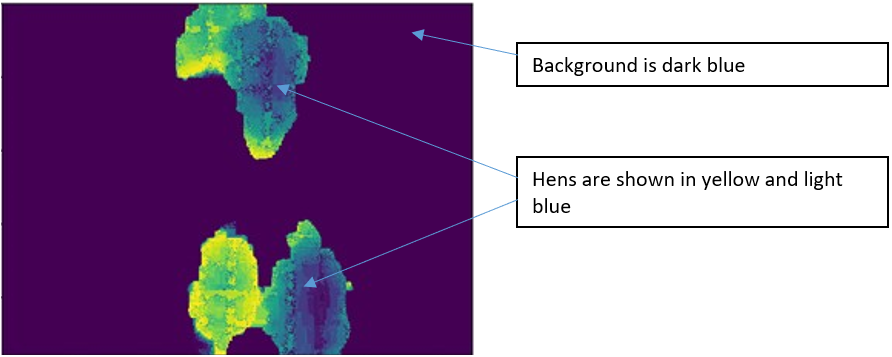
© MiteControl
The results of this laboratory-scale trial will be fine-tuned and validated at semi-commercial scale using larger groups of hens. The sensor system will need to be adapted for larger groups – for example, to account for movement of hens between multiple perches and floors. Once optimised to work in commercial conditions, it will be trialled on pilot farms in Belgium. Pilot farm trials are set to start in summer 2020.
To keep up to date with the MiteControl project please see the project website. The MiteControl project, NWE 756, Ensuring food safety, animal health and welfare standards through development of innovative IPM programmes to control poultry red mite infestations, is part funded by the European Regional Development Fund provided by the Interreg North-West Europe Programme.
